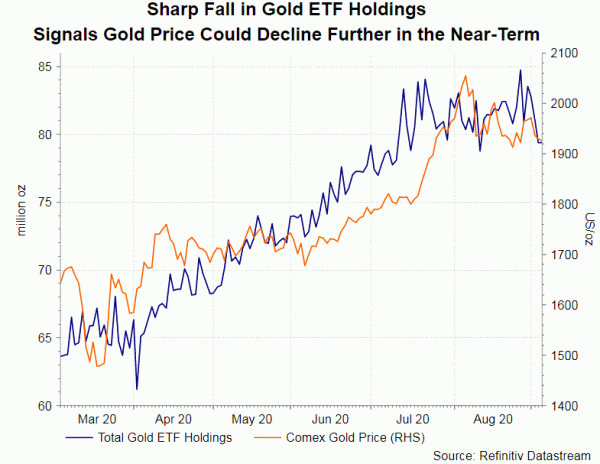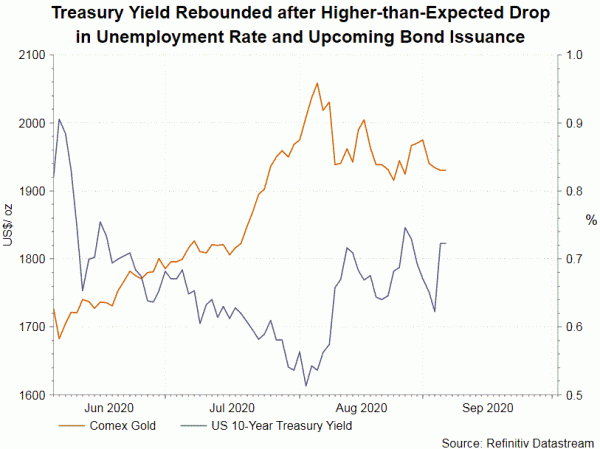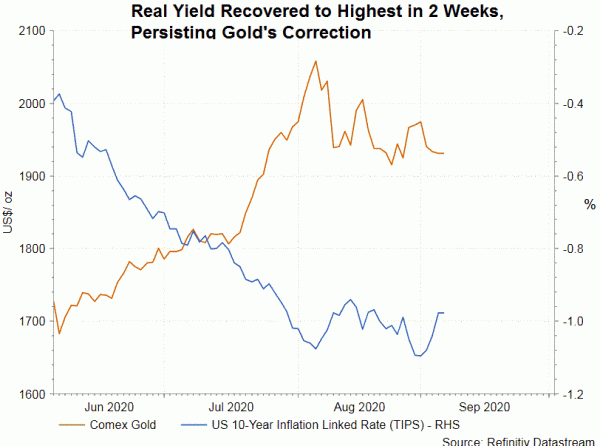Products You May Like
Gold price slashed more than 1.8% last week. Reasons for the selloff include better-than-expected US employment report, recovery in US dollar and rebound in Treasury yields. Gold’s correction from the peak has lasted for a month with over 6% of loss. More optimistic news about economic recovery and the coronavirus pandemic (e.g. vaccine) could raise market sentiment, sending gold price further lower. However, as the Fed has pledged to adopt a new monetary policy framework which is more dovish than the previous one, we expect yield would remain the downtrend later this year. This should once again lend support to gold price.
Better Economic Headlines
A surprising fall in US unemployment rate lifted USD and yields, hence pressuring gold. Unemployment rate dropped to 8.4% in August, compared with consensus of 9.8% and July’s 10.2%. The better-than-expected jobless rate same in although the participation rate climbed +0.3 percentage point higher to 61.7%. A higher participation rate signaled improved confidence about the economic outlook and the job market. Average earnings grew +4.7% y/y, beating consensus of +4.5%. Non-farm payrolls increased +1.37M, largely in line with consensus of +1.4M addition. The July reading was revised slightly lower to 1.73M. Looking into the breakdowns, the increase in private payrolls was disappointing. Addition of +1.03M was below consensus of +1.2M and the upwardly revised +1.48M in July. While payrolls have continued to increase, there is a long way to go for the market to return to pre-pandemic level.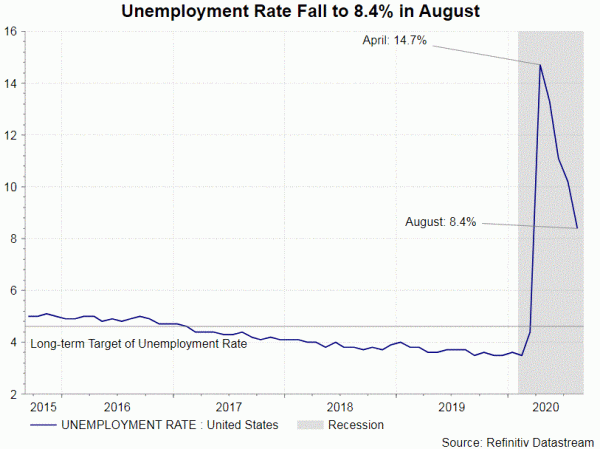
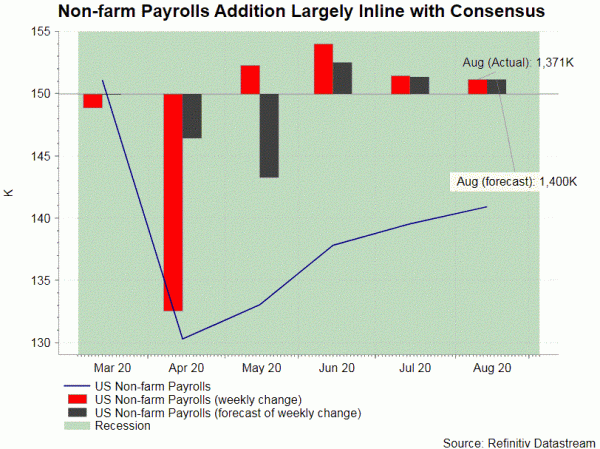
– advertisement –
Strong USD and Weak EUR
Euro’s movement is closely watched ahead of this week’s ECB meeting. Chief Economist Philip Lane, at the Jackson Hole symposium, raised concerns that recent rally in the single currency could prolong weak inflation and inflation expectations. As he suggested, “we have an inflation mandate and we care about the overall performance of the European economy”. He added that there has been “a repricing in recent weeks” in EURUSD “to some degree”. Amidst concerns that ECB might take actions to mitigate further appreciation in euro, the single currency plunged -0.84% against US dollar last week. However, the trade-weighted index (euro against a basket of currencies) only slipped -0.06% during the week.
While some suggested that euro’s pullback was pressuring gold, it makes more sense to suggest that the broad-based recovery of US dollar was driving gold lower. After consecutive weeks of decline, US dollar rebounded with the DXY index rising to a one-week high before pullback. The greenback strengthened against major currencies with the exception of New Zealand dollar last week.
Rising Yields
US Treasury yields picked up +10 bps on Friday, after strong headline employment data. Yields also increased amidst concerns that Fed’s purchases are insufficient to digest issuance. Real yield has exceptionally strong negative correlation with gold price. After falling to a new record of -1.096% on September 1, the 10-year real Treasury yield had been rising for 3 straight days and settling at a 2-week high of -0.977%.
In our previous report, we identified the strong and persistent positive correlation between gold ETF holdings and gold price, with ETF holdings leading gold’s movement for a week or so. The latest data shows holdings plunged to a 3-week low of 79.4M oz as of September 3, suggesting that we may see weaker gold price in the coming week.